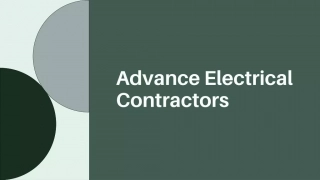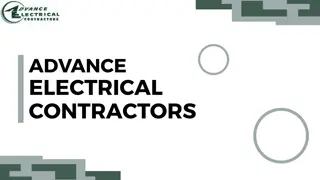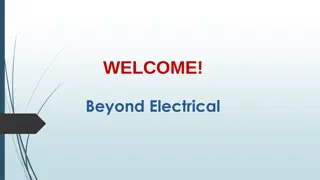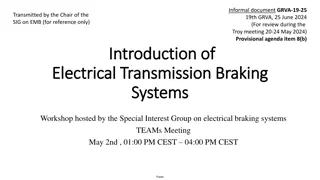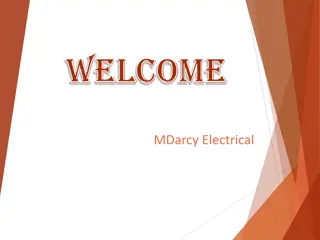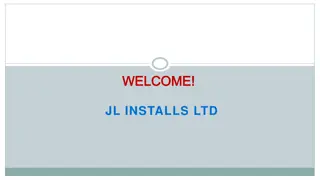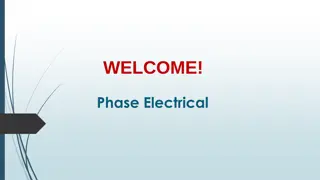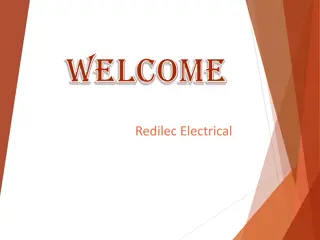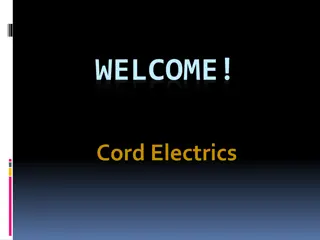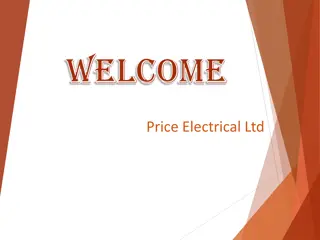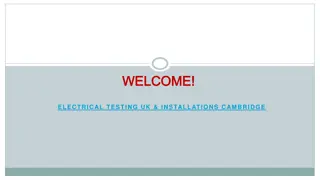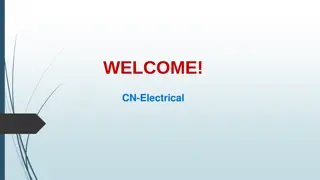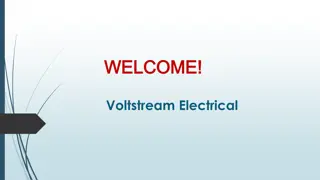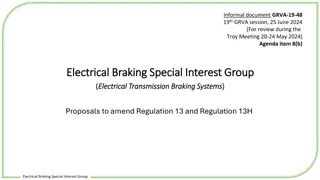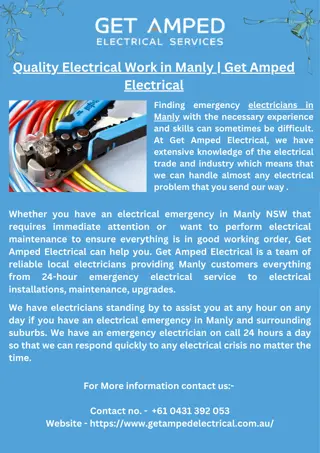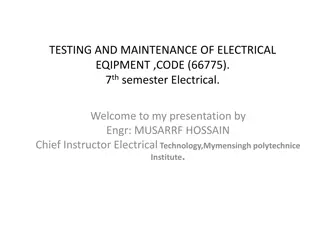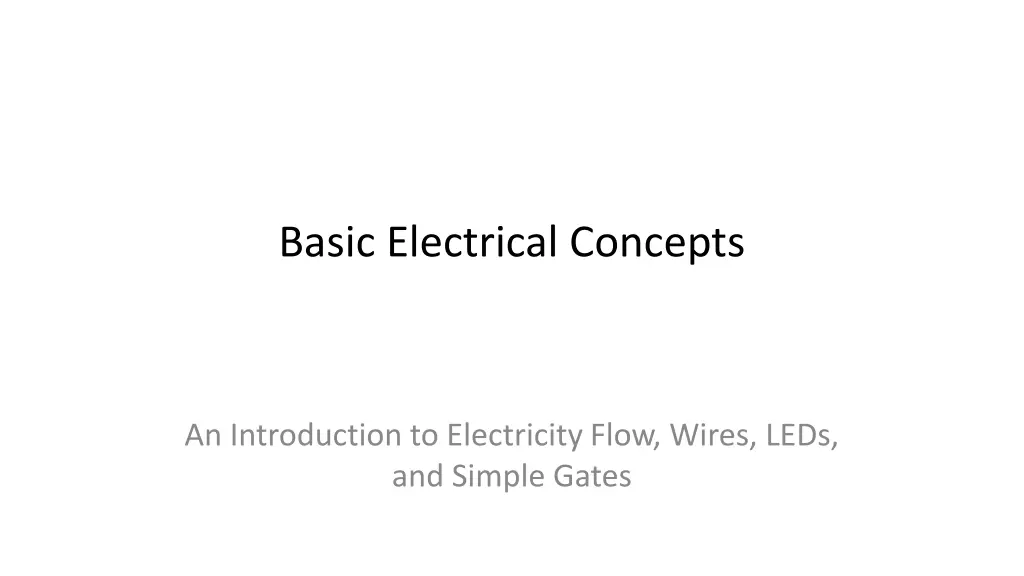
Understanding Basic Electrical Concepts and Components
Dive into the fundamentals of electricity flow, wires, LEDs, and simple gates with this introductory guide. Explore topics like Ohm's Law, circuit components, and practical circuitry such as LED setups. Gain insights into conductors, insulators, resistors, capacitors, and more essentials in this comprehensive overview of electrical principles.
Download Presentation

Please find below an Image/Link to download the presentation.
The content on the website is provided AS IS for your information and personal use only. It may not be sold, licensed, or shared on other websites without obtaining consent from the author. If you encounter any issues during the download, it is possible that the publisher has removed the file from their server.
You are allowed to download the files provided on this website for personal or commercial use, subject to the condition that they are used lawfully. All files are the property of their respective owners.
The content on the website is provided AS IS for your information and personal use only. It may not be sold, licensed, or shared on other websites without obtaining consent from the author.
E N D
Presentation Transcript
Basic Electrical Concepts An Introduction to Electricity Flow, Wires, LEDs, and Simple Gates
Slide 1: Title Basic Electrical Concepts An Introduction to Electricity Flow, Wires, LEDs, and Simple Gates
Slide 2: Electricity Flow Electricity is the flow of electric charge (electrons) through a conductor. Voltage (V) is the potential difference that drives the flow. Current (I) is the rate of flow of electric charge, measured in amperes (A). Resistance(R) opposes the flow, measured in ohms ( ).
Slide 3: Ohms Law Ohm s Law: V = I R Voltage (V) is the product of current (I) and resistance (R). This fundamental law helps us understand the relationship between voltage, current, and resistance.
Slide 4: Wires Conductors: Materials that allow electricity to flow easily, e.g., copper. Insulators: Materials that prevent the flow of electricity, e.g., rubber. Wire Types: Solid wire: Single, solid conductor, good for low-current applications. Stranded wire: Multiple thin wires twisted together, flexible and durable.
Slide 5: Basic Circuit Components Power Source: Provides the voltage, e.g., batteries, power supplies. Resistors: Limit the flow of current in a circuit. Capacitors: Store and release electrical energy. Switches: Control the flow of current by opening or closing the circuit.
Slide 6: LEDs LEDs emit light when current flows through them. Anode (+): Positive side where current enters. Cathode (-): Negative side where current exits. LEDs are energy-efficient and have a long lifespan. Always use a resistor in series with an LED to limit current.
Slide 7: Simple Circuit with LED 1. Connect the anode of the LED to the positive terminal of the power source. 2. Connect the cathode of the LED to one end of a resistor. 3. Connect the other end of the resistor to the negative terminal of the power source. This ensures the LED is protected and operates safely.
Slide 8: Simple Gates: AND Gate AND Gate: A basic digital logic gate that outputs HIGH (1) only when both inputs are HIGH (1). Truth Table: | Input A | Input B | Output | | 0 | 0 | 0 | | 0 | 1 | 0 | | 1 | 0 | 0 | | 1 | 1 | 1 | Used in digital circuits to perform logical operations.
Slide 9: Simple Gates: OR Gate OR Gate: A basic digital logic gate that outputs HIGH (1) if at least one input is HIGH (1). Truth Table: | Input A | Input B | Output | | 0 | 0 | 0 | | 0 | 1 | 1 | | 1 | 0 | 1 | | 1 | 1 | 1 | Used in digital circuits to perform logical operations.
Slide 10: Simple Circuit with Button 1. Connect one terminal of a button to the positive terminal of the power source. 2. Connect the other terminal of the button to one end of an LED. 3. Connect the other end of the LED to a resistor. 4. Connect the other end of the resistor to the negative terminal of the power source. Pressing the button completes the circuit, allowing current to flow and lighting up the LED.

